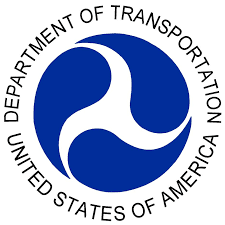U.S. Department of Transportation Sends $10 Million in ‘Quick Release’ Emergency Relief Funding to Vermont to Repair Statewide Flood Damage

WASHINGTON – The U.S. Department of Transportation’s Federal Highway Administration (FHWA) today announced the immediate availability of $10 million in “quick release” Emergency Relief (ER) funds for use as a down payment by the Vermont Agency of Transportation (VTrans). The funding is designed to help offset costs to repair infrastructure damaged by last month’s flooding throughout the state.
“I saw firsthand the devastating effects of extreme flooding on people and businesses in Vermont, and increasingly frequent climate disasters have wreaked havoc on more and more American communities,” said U.S. Transportation Secretary Pete Buttigieg. “This emergency funding will help the people of Vermont repair critical infrastructure as we continue working to support Vermonters in their efforts to recover and rebuild.”
“The Federal Highway Administration is working closely with VTrans to provide the necessary resources to restore essential transportation links,” said Federal Highway Administrator Shailen Bhatt. “The quick release funding we are providing will help get those repairs done as soon as possible so people can get back to their daily lives.”
Secretary Buttigieg and Administrator Bhatt joined Governor Phil Scott, VTrans representatives, and other officials in Vermont last month to assess the damage to roads, bridges and other critical infrastructure, and offer federal support to help Vermont recover from the storms.
Catastrophic flash flooding and river flooding occurred across much of Vermont starting on July 7, continuing for weeks. Extensive flooding to communities, washouts of numerous roads and bridges, and even the occurrence of land and mudslides resulted in significant property losses. The most widespread and significant flood damage occurred as a result of prolonged heavy rainfall between July 10 and 11, when rainfall amounts of three to nine inches were observed across the state over 48 hours. On July 11, President Biden approved an emergency declaration for Vermont, which authorized the Stafford Disaster Relief and Emergency Assistance Act to save lives, protect property, public health and safety and to lessen or avert the threat of a catastrophe in the state.
The funding announced today will be used to support clearing mud and rockslides from the roadway; opening plugged culverts; repairing culverts and eroded shoulders; clearing material deposited by floodwaters onto structures; making repairs to damaged roadways and structures; and repairing and replacing guardrails.
In addition to providing Emergency Relief funds following natural disasters, FHWA has worked closely with Vermont in recent years by providing funding for innovative tools that will help VTrans assess and make repairs in areas affected by natural disasters and flooding. Those tools include portable electronic devices and GIS mapping staff can use to obtain visuals and communicate remotely in order to determine where damage sites are located. FHWA has also approved the use of alternate contracting methods by VTrans that will allow the State to quickly deploy contractors to repair Vermont’s transportation system.
FHWA’s Emergency Relief program provides funding to States, territories, Tribes, and Federal Land Management Agencies for highways and bridges damaged by natural disasters or catastrophic events. These “quick release” Emergency Relief funds are an initial installment of funds to help restore essential transportation. Additional funds needed to repair damages to roads and bridges in Vermont will be supported by the Emergency Relief program through nationwide funding allocations.
The FHWA Emergency Relief program complements the Bipartisan Infrastructure Law programs and provisions by encouraging agencies to identify and implement measures to incorporate resilience in the design, restoration, and repair of damaged infrastructure, so that it can better withstand future damage from climate change and future weather events.
More information about FHWA’s Emergency Relief program can be found online at https://www.fhwa.dot.gov/programadmin/erelief.cfm


